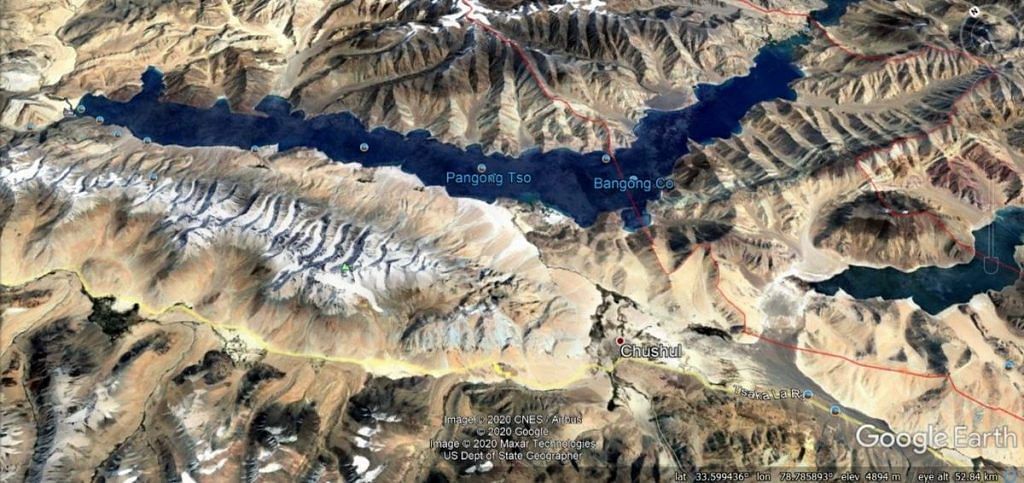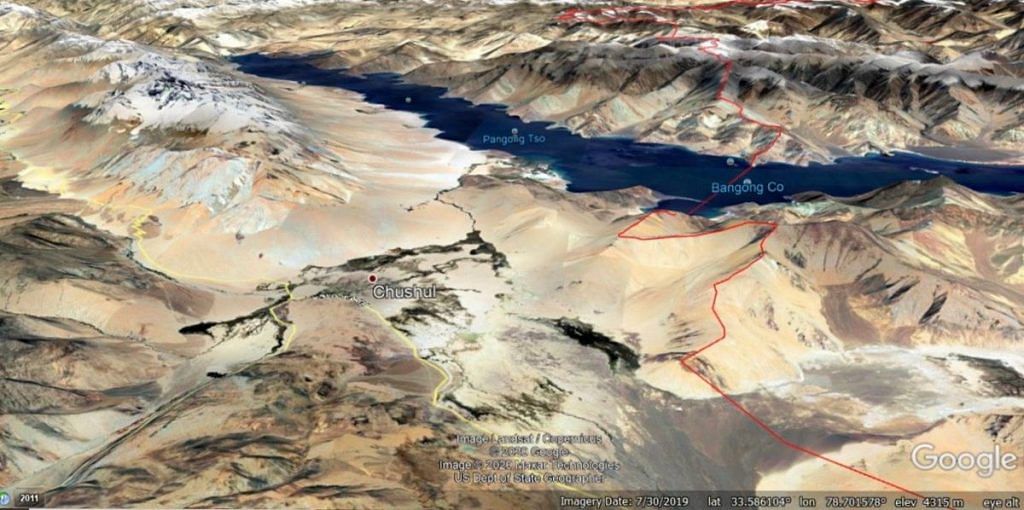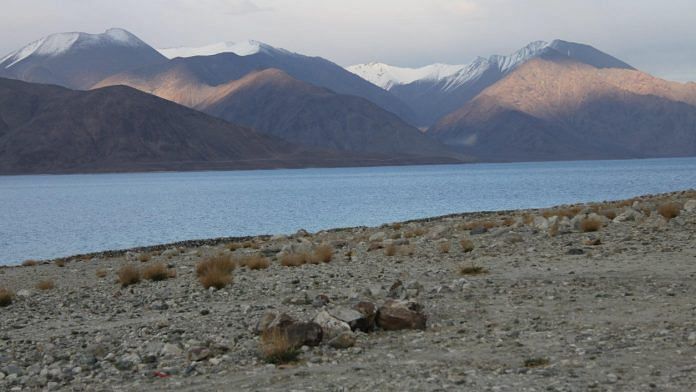New Delhi: A fresh flare-up between Indian and Chinese soldiers on the night of 29-30 August in eastern Ladakh has opened another front in their over three-month-long stand-off — the southern bank of Pangong Tso.
So far, the tensions at Pangong Tso have been on the northern bank, and the eight ‘fingers’ of mountainous land jutting into the lake on that side. However, the southern bank of Pangong Tso provides access to eastern Ladakh and important heights of Rezang La further east, where major battles were fought between the Indian and Chinese troops in the 1962 war.

Former Director General of Military Operations Lt. Gen. Vinod Bhatia (retd) said the southern bank of Pangong Tso is less operationally and tactically important than the northern bank, so China could just be “posturing”, and attempting to expand its scope of operations in the region.
“On the northern bank, a road from the east comes right up to finger 4, as compared to the southern bank, where the road ends far to the east,” he said.
Also read: After missile sites, China now builds heliports along LAC in Ladakh and near Doklam
‘Southern bank gives an advantage’
A senior Army officer familiar with the region said the terrain on the southern bank close to the lake is flatter than the northern bank, and amenable to limited mechanised warfare in the Chushul sector. The heights surrounding the area are in the range of 16,000 -18,000 ft.

Further to the south-east of the Pangong Tso is the Spangur Gap between the mountains, which can be used by the Chinese to advance towards Leh in case of a major offensive in the sector, the officer said.
“This makes it important for Indian troops to hold Rezang La and adjoining heights to dominate any Chinese troop movement,” the officer said.
A second Army officer said safeguarding the southern bank is important because of the flat terrain lying between the lake and Chushul. “This area can be exploited by the enemy to get access to the strategically important Durbuk-Shyok-Daulat Beg Oldi (DSDBO) road,” the officer said.
Former 14 Corps commander Lt. Gen. P.J.S. Pannu (retd) said the southern bank gives the Indian troops an advantage in terms of monitoring the activities in the northern bank. “There has been a hardening of military posturing in the southern bank, too, by the Chinese, given that Indian troops hold certain significant heights in the region,” he said.
Satellite imagery analysts have said the Chinese have continued to build up troops since May when the stand-off began.
The anonymous satellite imagery analyst who goes by Twitter handle @detresfa_ said in a June post the Chinese have built multiple camps and support positions at the southern bank of Pangong Tso — 12km from the lake — just behind a permanent structure reportedly used as a border meeting point.
More #China PLA support positions 19Km South of the #IndiaChinaFaceOff at #PangongTso
CC @Nrg8000 pic.twitter.com/XT8jtaTHRn
— d-atis☠️ (@detresfa_) June 23, 2020
The 29-30 August flare-up
While more details of the flare-up are emerging, this marks the first major incident since the deadly clash between the troops in Galwan Valley on 15 June, which killed 20 Indian soldiers. A brigade commander-level flag meeting is in progress at Chushul to resolve the issues.
Government sources said there was no physical clash between the Indian and Chinese troops, and the Chinese foreign ministry, too, said their troops did not cross the Line of Actual Control (LAC).
In a statement Monday, the Indian Army said the troops of the People’s Liberation Army “violated” the previous consensus reached between the two sides during past military and diplomatic engagements to resolve the stand-off in eastern Ladakh, and carried out “provocative military movements to change the status quo”.
The Army said Indian troops pre-empted this PLA activity on the southern bank of Pangong Tso and undertook measures to strengthen positions and thwart Chinese intentions to unilaterally change facts on ground.
Also read: China digs heels in for winter, continues building roads and bridges on own side of LAC




Fake and biased journalism